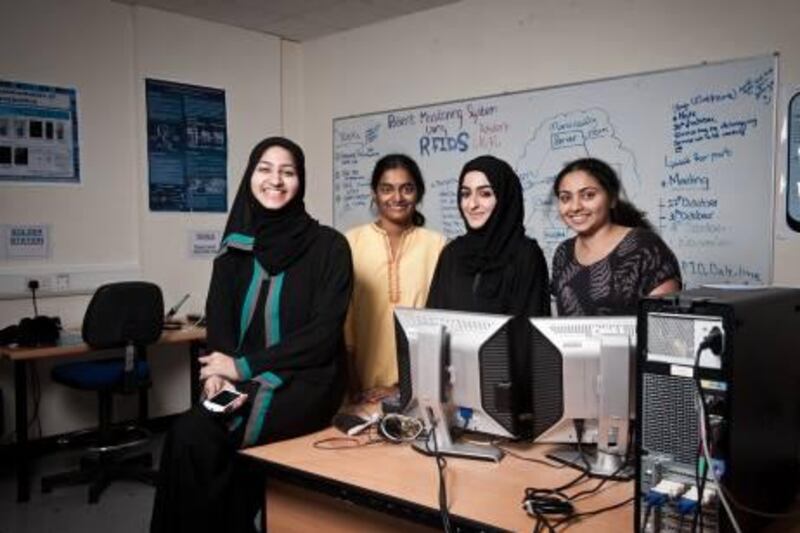SHARJAH // Almost everyone has experienced it one time or another: a terrible, sleepless night followed by a bout of fatigue the next day.
Many will not seek help until the situation becomes severe.
But what if a mobile phone could monitor every move and breath someone made while sleeping, record it, and send it to the doctor for assessment?
Four computer engineering students at the American University of Sharjah are developing a smartphone application that documents a sleeper's oxygen levels, breathing patterns and movement. The application aims to help people recognise sleep apnoea, a sleeping disorder characterised by interrupted breathing patterns.
Recent figures from Rashid Hospital show that nearly a third of residents in the UAE suffer from sleep disorders, and sleep apnoea is estimated to affect nearly 10 per cent of the country's population.
The application is part of a program design course that seniors at the university must take to graduate.
"In an effort to improve the quality of life for patients and to reduce the rising costs of health care, there is an emerging trend to move healthcare systems from the traditional hospital-centred system to an individual-centred system," said Assim Sagahyroon, the head of the department of computer science and engineering at AUS. "This project allows individuals to assess whether they suffer from sleep-apnoea symptoms within the comfort of their beds and in a cost-effective way."
With a variety of health topics available to them, including Alzheimer's disease and dermatology, students chose sleep apnoea because of its untapped potential.
"It's a unique subject, but it has not been approached as much as other diseases, especially in the form of mobile applications," said Meher Zaidi, one of the students developing the application.
Dr Fadi Aloul, associate professor of computer science and engineering at the university, said he tried to motivate his students to look at the broader picture.
"I advise them to focus on poor countries with rural areas that don't have many medical supplies or labs," he said. "But, people in those countries may have a phone. So why not develop an application that can be used to help people in that poor area?"
And so the task was clear: develop a smartphone application that can be used intelligently and efficiently to solve a health problem.
The application, called the sleep apnoea monitor, or "Sam", uses the phone's built-in microphones and motion sensors to record breathing patterns and movement. An external Bluetooth or wired oximeter would then be used to monitor oxygen levels in the blood.
"Except for the oximeter, the application utilises all of the phone's inbuilt functions," said Shamma Al Qassim, another group member. "Even if a person doesn't want to invest in the oximeter, they could still use the application's two other features."
Users simply turn on the application before they sleep, and turn it off when they wake. Bed movement triggers the phone's motion sensors. Once the software is downloaded, internet access is not necessary for the module to function. The application charts the information and with the click of a button, the information can be sent to a database of doctors.
With this innovation, students hope to allow people to catch the disorder early and receive the treatment they need without the hassle of being wired to sleep-monitoring machines at a hospital.
"Getting sleep tests is often uncomfortable and intrusive," said Shaheen Khoja, also a group member. "This is more convenient and may motivate people to check their sleeping patterns."
Medhumeta Ganesh, the fourth member of the young innovators, said the group was trying to keep the application as "user-friendly as possible".
"We want everyone to be able to take advantage of this technology," she said.
The students are developing the application on Android, and hope to expand it to other platforms including the iPhone and BlackBerry.
As an added feature, the students want to give users a brief summary of the report before it is submitted to doctors. They are looking for experts who could provide them with the benchmarks, and will seek volunteers willing to test the application after a prototype is ready in May.
"Our dream is that this project becomes a product, and not just an idea that will be shelved," Dr Aloul said. "We're still hoping for that successful story, to make this a product of the UAE."






